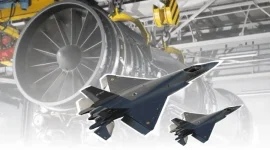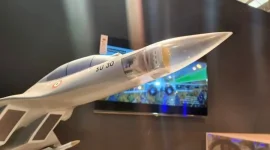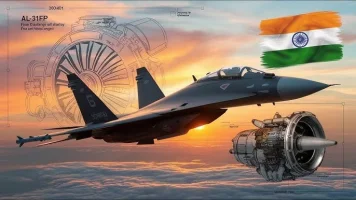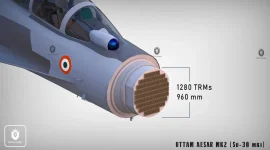- Views: 4K
- Replies: 34
The Aeronautical Development Agency (ADA) has announced a significant update to the development schedule of the Twin Engine Deck Based Fighter (TEDBF), confirming that the aircraft is now expected to enter service with the Indian Navy in 2038.
This revised timeline represents a delay of several years compared to initial projections and is attributed to a reassessment of the program's milestones and development process.
The TEDBF is a critical element of India's future naval aviation capabilities, intended to replace the aging Sea Harrier fleet and complement the existing MiG-29K fighters. Designed specifically for aircraft carrier operations, the TEDBF is expected to provide the Indian Navy with enhanced performance, improved survivability, and greater operational flexibility.
According to ADA, the next major milestone for the TEDBF program is anticipated clearance from the Cabinet Committee on Security (CCS), expected by 2026. This CCS clearance will be crucial in securing the necessary funding and governmental approval to proceed with the program.
The first flight of the TEDBF, initially anticipated earlier, is now projected to occur between 2029 and 2030. This delay is attributed to several factors, including the need for design refinements, integration of advanced systems, and rigorous testing to meet the demanding requirements of naval operations. Despite the delay, the first flight will be a significant achievement, demonstrating the aircraft's capabilities and paving the way for further development.
Following its maiden flight, the TEDBF will undergo extensive testing, design iterations, and integration with Indian Navy assets, including aircraft carriers. The projected service entry date of 2038 marks a considerable shift from earlier estimates, primarily due to the complexities associated with developing an advanced naval fighter that can withstand the rigors of carrier-based operations.
The TEDBF is envisioned as a twin-engine, multirole aircraft capable of fulfilling a variety of missions, including air superiority and precision strikes, while operating from India's next-generation aircraft carriers. Equipped with advanced avionics, weapon systems, and extended range, the TEDBF will offer enhanced capabilities compared to its predecessors, particularly in terms of survivability and effectiveness in contested airspace.
This revised timeline underscores the ADA's commitment to ensuring the TEDBF meets the highest standards of performance and reliability, ultimately providing the Indian Navy with a cutting-edge fighter aircraft for decades to come.




